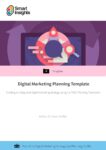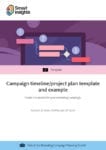What are the six essential parts of a campaign planning template?
Today's marketing campaigns are complex since they need to reach and engage audiences across a range of digital and traditional channels as shown by our RACE customer customer lifecycle visual: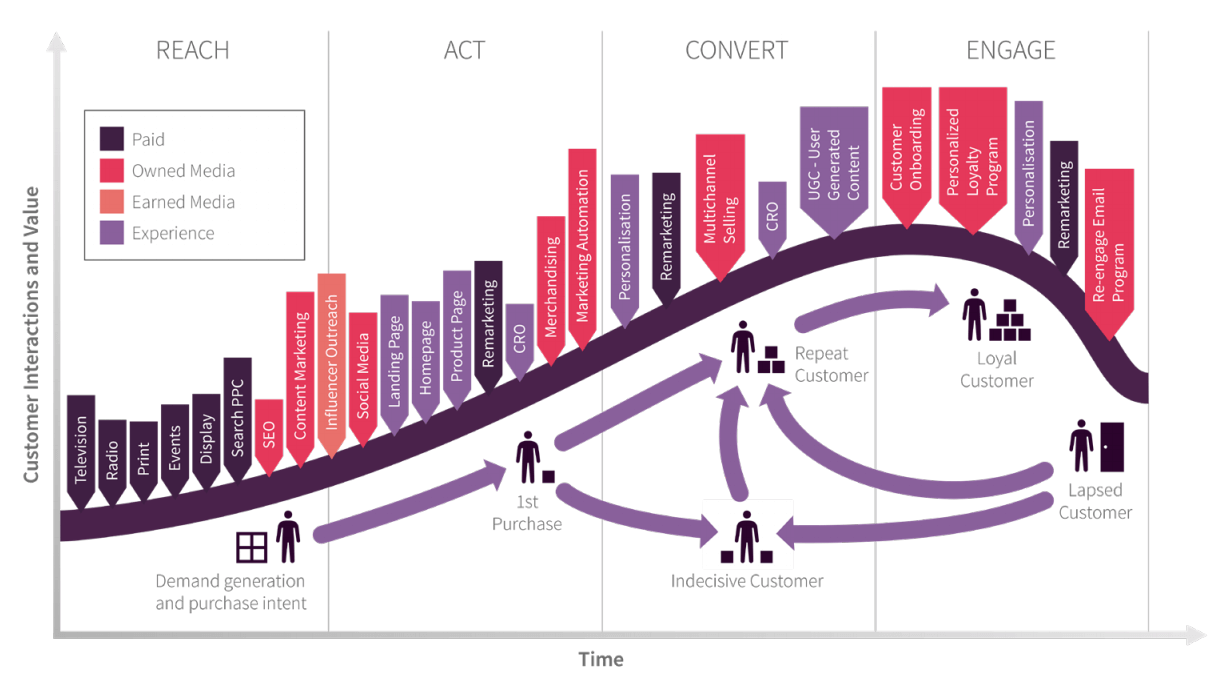
In this article, we'll step you through an effective structure for briefing marketing campaigns to an agency or in-house team that has been used by tens of thousands of businesses in different sectors including financial services, retail, travel and consumer brands.
At the end of the article, I will also show you how to layout the sequence of activities you need to complete to run your campaign on a campaign plan timeline, an essential technique for planning campaigns.
I originally developed our template for structuring one-day training courses on Creating Effective Marketing Campaigns that I ran for the Chartered Institute of Marketing in the UK. We emailed the Word template to course participants after the training so that they could adapt it to their planning process. For the last 15 years, the template has been made available to Smart Insights members around the world to download. Unsurprisingly it's one of our most popular member downloads since every business needs marketing campaigns.
What is a marketing campaign plan?
A campaign plan is a short-term integrated communications plan aimed at generating leads, sales or to change perceptions within a target audiences.
The purpose of marketing campaign planning is to define relevant, integrated, marketing activities and channels to reach campaign objectives as well as influence audiences. An effective campaign plan has an engaging, shareable, campaign concept that utilizes both online and offline marketing communications tools and digital media channels.
What is meant by campaign planning?
Campaign planning is the process of setting your goals for a campaign, understanding your audience, defining an engagement strategy and creating a budget for investing time/money into different types of media including content.
How do you create a marketing campaign plan?
To create an effective marketing campaign plan, you need a structure that contains the main success factors for any type of campaign.
Here's our checklist for what a solid marketing campaign planning process and template should contain:
- Clear, realistic SMART marketing goals that you can be confident of hitting
- A well-defined target audience based on research
- A campaign big idea and supporting content strategy to engage your audience
- A defined messaging hierarchy to communicate your brand proposition
- A media plan and media schedule to reach your target audience
- An action plan including an editorial plan and content assets needed
- A method to check you are on track with your plans
What is an integrated marketing campaign?
Research shows that effective campaigns use integrated communications across channels so that the campaign delivers on these goals for communications:
- Coherence – different communications are logically connected.
- Consistency – multiple messages support and reinforce, and are not contradictory.
- Continuity – communications are connected and consistent through time.
- Complementary – synergistic, or the sum of the parts is greater than the whole!
When to use a marketing campaign plan?
Your marketing campaign plan should be used in order to maximize the reach of online campaigns and acquire new customers. Retention campaigns are used in larger organizations. Campaigns should be used and designed with specific goals in mind, such as:
- A branding campaign to build brand awareness, favourability, and familiarity
- Launching a new product
- Distributing a new content asset as part of a content marketing lead-generation initiative
- Increasing sales of a current established product
- Promotional campaigns to increase sales by offering a seasonal discount
What size of businesses need campaign planning?
Marketing campaign planning isn’t just for big marketing departments. Organizations of any size, type and at any stage of existence can utilize a marketing campaign plan in order to achieve an effective campaign. Today, with the wide use of content marketing by businesses, a campaign plan to launch your content makes campaign planning more relevant to all businesses.
A marketing campaign plan does not need to be lengthy or complicated. Creating a simple campaign plan with clear actions can ensure that both small and larger organizations are focusing on their goals and the overall success of the business.
How should a campaign plan be structured?
The stages of marketing campaigns and key issues that need to be included and answered in your campaign plan are:
- Campaign goals and tracking.
What are we trying to achieve through our campaign and how will we know when we achieve it?
- Campaign insight and targeting.
Who are we trying to reach and influence?
- Key campaign messages and offers.
How are we trying to position our company, products and services?
Which campaign or product offers will engage and convert our audience?
- Campaign media plan and budget.
Which media channels will you use to reach and influence your target audience?
What will be the sequence and integration of media activities?
- Campaign asset production.
Managing the assets to form the campaign
- Campaign execution.
What needs to be tested before the campaign is live and adjusted during the campaign?
Smart Insights premium nembers can use our ready-made Microsoft Word marketing campaign plan template to build, track, and present their campaign plans and briefs using this structure. It features a one-page summary for the whole campaign in these 6 parts and then, for larger businesses or campaigns, 1-2 pages detailing each part of the campaign.
Campaign plan example
A campaign plan template typically includes defining the following:
- Relevant customer profiles or personas to target
- The value proposition of the product or service
- The primary or hero offer which is the call to action (CTA)
- The promotional channels for raising awareness and encouraging action
- How website landing pages and customer journeys will feature the offer
- The timeline and action plan
- The budget required
- The mechanics for how leads are generated will be nurtured and followed up through offers
- How results will be measured and reported
How to create your campaign strategy
We recommend applying our RACE Framework to inform your campaign strategy. RACE is a practical strategic framework to help manage and improve results from your digital marketing.
So, if you think your campaigns would benefit from a RACE strategy approach, download our free digital marketing plan template now to discover how you, too, can optimize and manage your marketing strategy across an integrated RACE funnel.
Free digital marketing plan template
Our popular marketing planning template is structured across the Smart Insights RACE Framework. Join Smart Insights as a Free Member to download our digital marketing plan template today
Access the Free digital marketing plan template
What is the RACE Framework?
The RACE Framework covers the full customer lifecycle or marketing funnel from acquisition to retention as shown in this infographic showing the goals for each part of RACE and how you can measure them.
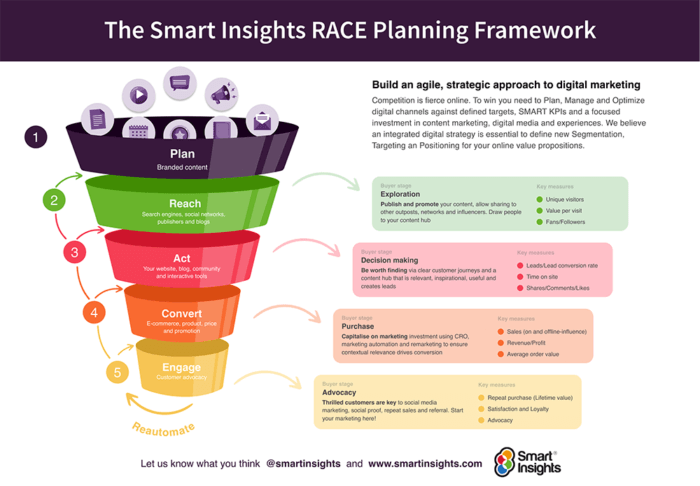
You can apply RACE to campaigns like this:
An effective digital campaign plan based on the RACE Framework (Reach, Act, Convert, Engage) follows a structured approach to ensure that marketing efforts drive measurable results. Here’s how to create one:
Plan
Define Campaign Goals and KPIs
• Align with overall business objectives (e.g., brand awareness, lead generation, sales, customer retention).
• Use SMART goals (Specific, Measurable, Achievable, Relevant, Time-bound).
• Define KPIs such as website traffic, conversion rate, ROI, engagement metrics, etc.
Research Audience Targeting and Persona Development
• Define audience segments based on demographics, psychographics, behavior, and needs.
Use customer personas to tailor content, messaging, and channel selection.
Reach (Awareness and Traffic Growth)
Objective: Drive relevant traffic to your site.
Key Tactics:
•SEO and content marketing (blog posts, pillar pages, videos).
•Paid media (Google Ads, social media advertising).
•Influencer and PR outreach.
•Email outreach and referral marketing.
KPIs:
• Organic and paid traffic.
• Social media reach and engagement.
• Click-through rates (CTR) on ads and emails.
Act (Engagement and Lead Generation)
Objective: Encourage interactions and lead capture.
Key Tactics:
• Create high-value lead magnets (Ebooks, webinars, free trials).
• Optimize landing pages and call-to-action (CTA) buttons.
• Use chatbots and interactive content (quizzes, surveys).
•A/B testing for conversion rate optimization (CRO).
KPIs:
• Bounce rate and time on site.
• Lead form completions.
• Content downloads.
Convert (Sales & Revenue Growth)
Objective: Convert leads into paying customers.
Key Tactics:
• Implement email nurture sequences to support campaign (abandoned cart emails, welcome series).
• Personalization with retargeting ads.
• Streamline checkout experience with trust signals (reviews, testimonials).
• Offer limited-time discounts and bundles.
KPIs:
• Sales conversion rate.
• Revenue per visitor.
• Average order value (AOV).
Engage (Customer Retention & Loyalty)
Objective: Build long-term relationships to increase customer lifetime value (CLV).
Key Tactics:
• Personalized email campaigns (loyalty rewards, VIP offers).
• Social media engagement and community building.
• Surveys and feedback loops for continuous improvement.
• Subscription models or membership programs.
KPIs:
• Repeat purchase rate.
• Net Promoter Score (NPS).
• Customer retention rate.
Why use the RACE Framework for campaign planning?
The RACE Framework will help simplify your approach to reviewing the performance of your marketing campaigns and taking actions to improve their effectiveness:
- RACE is practical and action-oriented – it focuses on tactics you can implement in your marketing communications and on your website and mobile apps
- RACE is customer-centered – it follows the established customer lifecycle of relationship building or marketing funnel from creating awareness; generating leads from new prospects; converting prospects to sell online or offline and encouraging loyalty, repeat sales and advocacy such as social sharing.
- RACE integrates performance evaluation – It defines KPIs that marketing campaign planners should include at each stage for setting targets and reviewing results using analytics and summary dashboards.
Applying PR Smith's SOSTAC® to RACE campaign planning
To make sure your marketing campaign plan has all the essential features, I recommend also applying the SOSTAC® structure developed by PR Smith—Dave Chaffey’s co-author of the printed book Digital Marketing Excellence.
SOSTAC® is a great framework for structuring business, marketing or digital marketing plans since it’s relatively simple and logical, so it’s easy to remember and to explain to colleagues or agencies. SOSTAC® is a strategic planning process framework that gives you a clear structure to work through to create and manage your plan.
So, what does SOSTAC® stand for?
Situation analysis means ‘Where are we now?’ For marketing campaign planners, questions include:
- Who are our target customers?
- What are their typical characteristics?
- What campaigns have been used by our competitors?
- How are they meeting the needs of our target customers?
- Which creative and messaging tactics are they using?
- How can we achieve differentiation?
- Which data about customer and competitor behaviour is available to inform our campaign?
Objectives mean ‘Where do we want to be?’
- What are the SMART campaign goals including the number of leads and sales based on reach?
- What are we trying to achieve through our campaign and how will we know when we achieve it?
- Is our focus customer acquisition, retention and growth or creating brand awareness?
- What are the timescales?
- Who are we trying to reach and influence?
- Which are the customer personas?
- Which customer insights are these based upon?
We recommend you create a conversion-based campaign forecasting model for your campaign so you can be more confident that it will reach the audience needed to give the required levels of business outcomes, i.e. leads and sales.
Strategy means ‘How do we get there?’ Strategy summarizes how to fulfil the objectives. It is the shortest part of the plan, but arguably, the most important, as it gives direction to all the subsequent tactics. It answers questions including:
- What are our campaign messages and offers?
- Which campaign or product offers will engage and convert our audience to the goals identified?
- How will we connect with and convince our audience using content marketing?
- How will we position our company, products and services?
Tactics are the details of the strategy. They highlight on a marketing campaign plan exactly which tactics occur when. Your chosen tactics should support and adhere to your customer’s journey. Questions include:
- What is our media plan and budget?
- Which media channels will we use to reach and influence our target audience?
- What will be the sequence and integration of media activities?
Campaign planning tactics for marketers
To drive reach online to achieve your campaign goals I recommend you consider these 6 channels defined in this diagram.
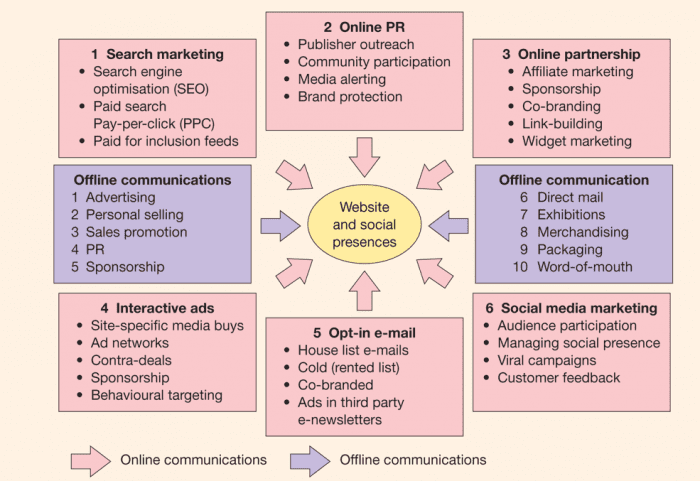
Action is the detailed planning of tactics.
- Who does what, when and how?
- What processes and activities are required to make things happen?
Control identifies what you need to measure when and what happens. The Control section of the plan ensures you know if you are succeeding or failing – and you can make adjustments– before it is too late. How you measure the success of your marketing campaign activities will be based upon the overall marketing objectives detailed in your marketing plan.
What is the best way to lay out a campaign timeline?
Laying out the sequence of activities you need to complete to run your campaign on a timeline is an essential technique for planning campaigns, but in our experience, often marketers don’t do this because they don’t know how or they don’t make the time. We recommend it since it helps you plan your activities into a logical order to maximize the reach and frequency across the audience you are targeting. Plus, it helps communicate within your team or with your agency as part of the planning process. You can create an initial timeline and then adjust it in a brainstorming session.
Here is an example of a recommended timeline visual taken from Chapter 8 in my book: Digital Marketing: Strategy: Implementation and Practice.
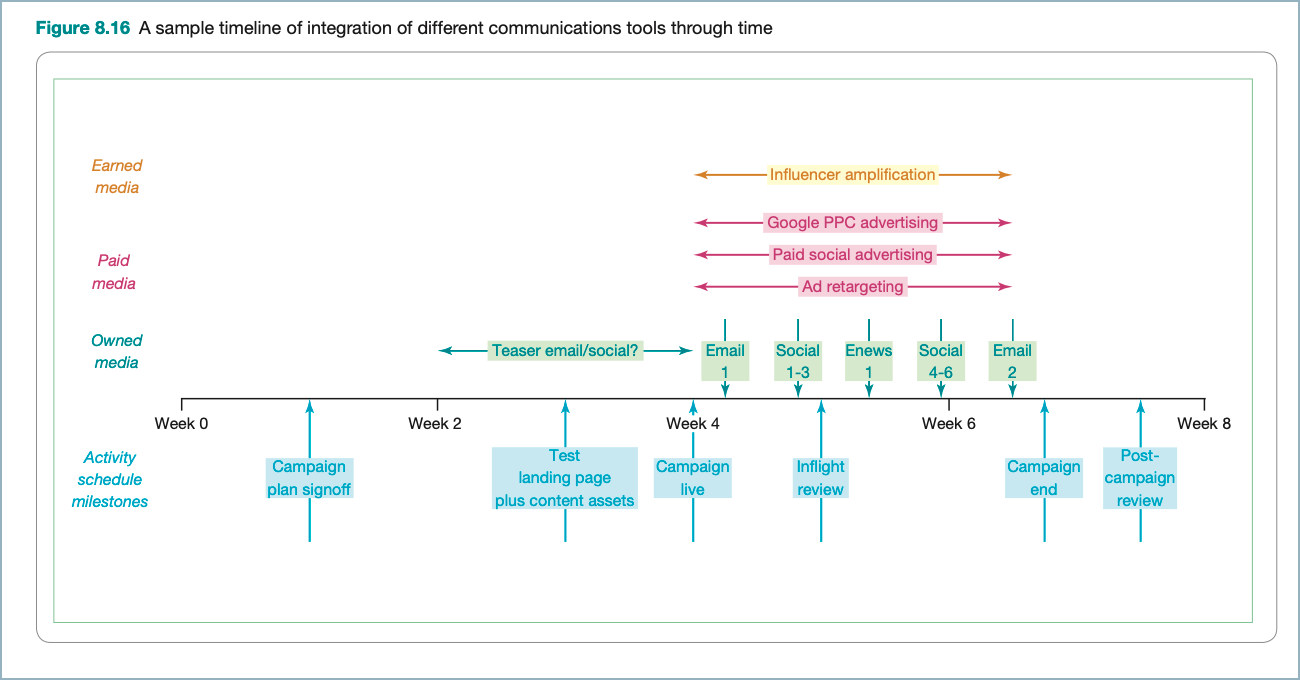
I originally developed this layout when delivering courses in Marketing campaign planning since it worked well as an activity where a group would sequence activities to give the best results in response to a campaign brief.
My tips for creating this type of campaign timeline are:
- Work back from the event launch i.e. from right to left so that there is sufficient time for each activities
- Group activities by paid, owned and earned media so you review all your media options (or use channels)
- Since email communications to existing contacts are sent at specific times, add them just above the campaign timeline
- Make sure you allow enough space for pre and post campaign activities
You can also create this type of layout in a spreadsheet. Three alternative planning views are available to download for our premium members.




